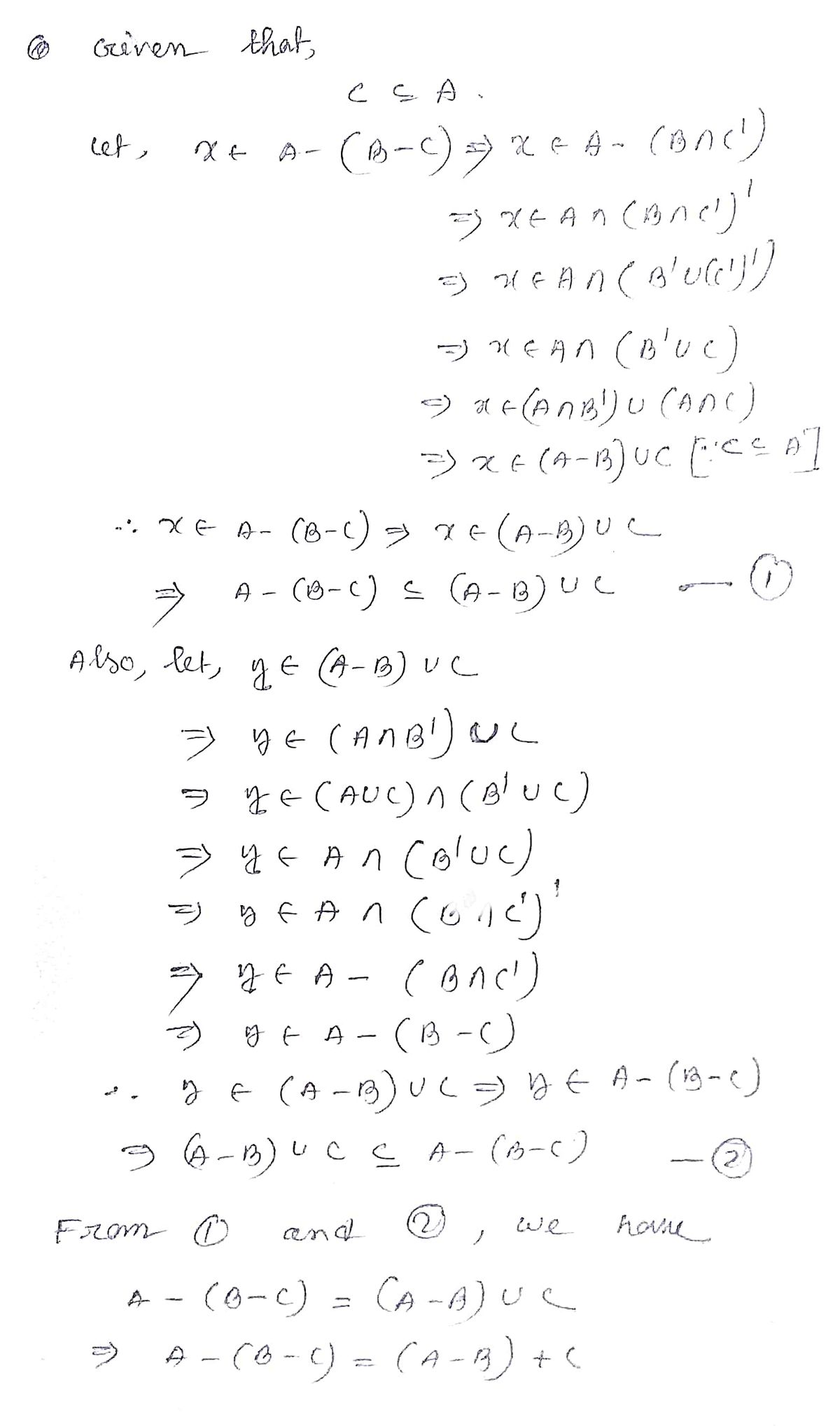
Advanced Engineering Mathematics
10th Edition
ISBN: 9780470458365
Author: Erwin Kreyszig
Publisher: Wiley, John & Sons, Incorporated
expand_more
expand_more
format_list_bulleted
Question
Let A, B, C be sets. Prove that if C ⊆A, then A −(B −C) = (A −B) ∪C. Analogously,
for any real numbers a, b, and c, recall that a −(b −c) = (a −b) + c.
Expert Solution
arrow_forward
Step 1

Step by stepSolved in 2 steps with 1 images

Knowledge Booster
Similar questions
- Let a, b be positive real numbers. Prove that a +b< v2(a² +b²).arrow_forwardIf a and b are odd positive integers, and the sum of the integers, less than a and greater than b, is 1000; then find a and b.arrow_forward2. Use prove by contrapositive to show that: (For real numbers a, b, c) If (a – b)² + (b – c)² + (c- a)? = 0, then a = b = c.arrow_forward
- Determine whether the statement is true or false. Prove the statement if it is true, and give a counterexample if it is false. (i) For all real numbers x and y, [x – y] = [x] – [y]. (ii) Let a, b and c be integers. If a|(bc), then a|b or a|c. (iii) Let m and n be integers. If m is even and n is odd, then m² – n² is odd.arrow_forwardLet a and b be real numbers. Prove that if 4a+16b= 123, then a and b are not integersarrow_forward
arrow_back_ios
arrow_forward_ios
Recommended textbooks for you
 Advanced Engineering MathematicsAdvanced MathISBN:9780470458365Author:Erwin KreyszigPublisher:Wiley, John & Sons, Incorporated
Advanced Engineering MathematicsAdvanced MathISBN:9780470458365Author:Erwin KreyszigPublisher:Wiley, John & Sons, Incorporated Numerical Methods for EngineersAdvanced MathISBN:9780073397924Author:Steven C. Chapra Dr., Raymond P. CanalePublisher:McGraw-Hill Education
Numerical Methods for EngineersAdvanced MathISBN:9780073397924Author:Steven C. Chapra Dr., Raymond P. CanalePublisher:McGraw-Hill Education Introductory Mathematics for Engineering Applicat...Advanced MathISBN:9781118141809Author:Nathan KlingbeilPublisher:WILEY
Introductory Mathematics for Engineering Applicat...Advanced MathISBN:9781118141809Author:Nathan KlingbeilPublisher:WILEY Mathematics For Machine TechnologyAdvanced MathISBN:9781337798310Author:Peterson, John.Publisher:Cengage Learning,
Mathematics For Machine TechnologyAdvanced MathISBN:9781337798310Author:Peterson, John.Publisher:Cengage Learning,


Advanced Engineering Mathematics
Advanced Math
ISBN:9780470458365
Author:Erwin Kreyszig
Publisher:Wiley, John & Sons, Incorporated

Numerical Methods for Engineers
Advanced Math
ISBN:9780073397924
Author:Steven C. Chapra Dr., Raymond P. Canale
Publisher:McGraw-Hill Education

Introductory Mathematics for Engineering Applicat...
Advanced Math
ISBN:9781118141809
Author:Nathan Klingbeil
Publisher:WILEY

Mathematics For Machine Technology
Advanced Math
ISBN:9781337798310
Author:Peterson, John.
Publisher:Cengage Learning,

